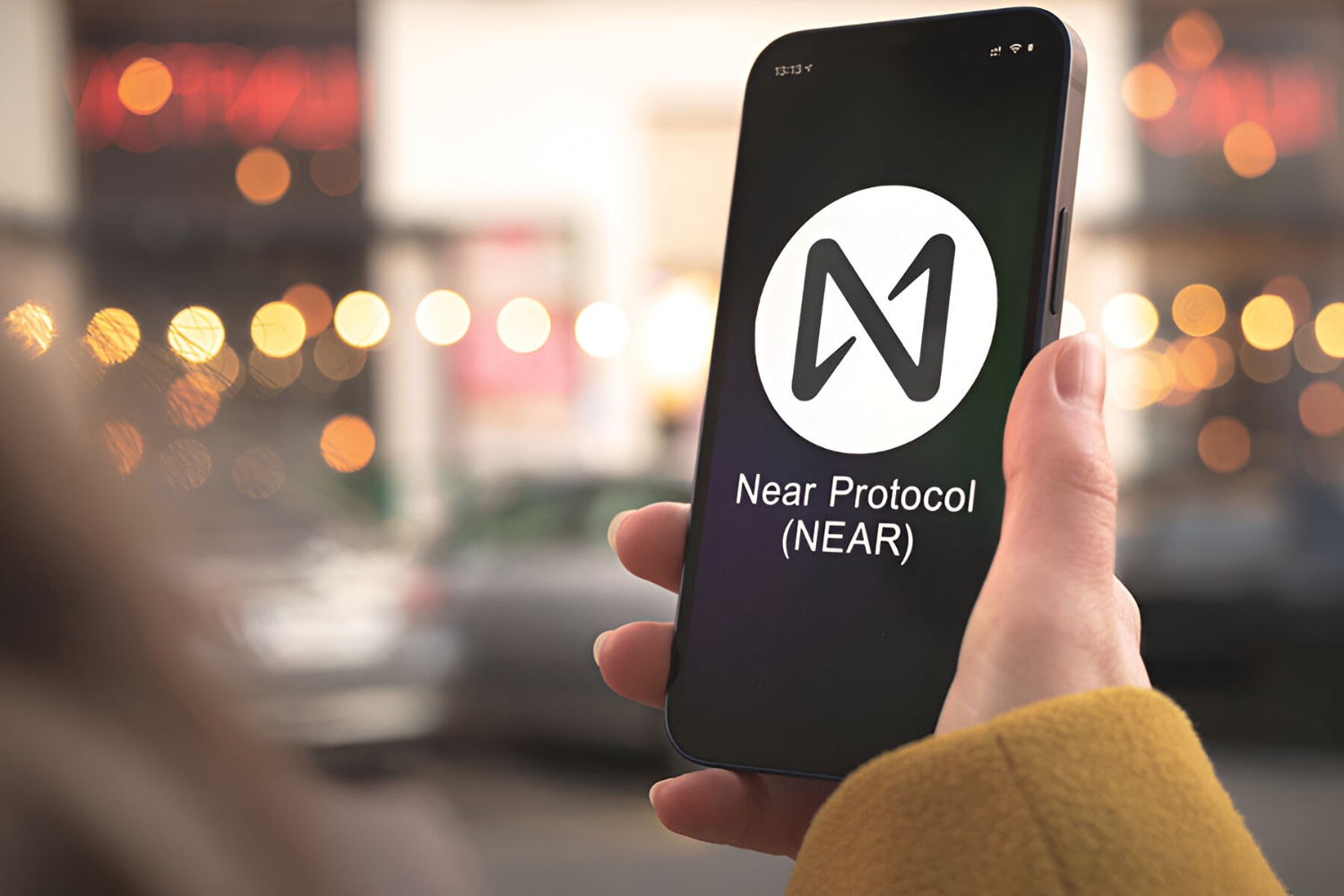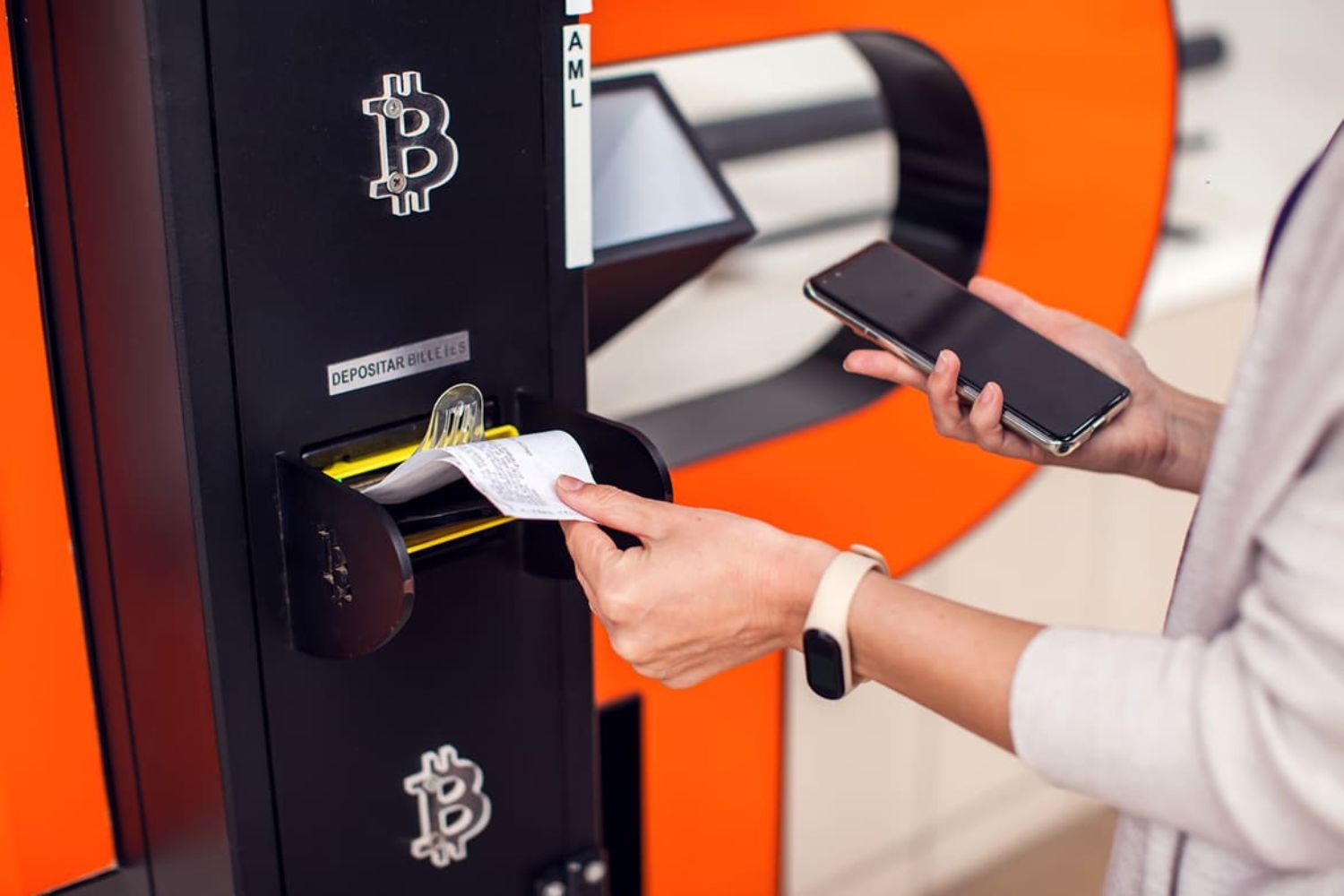Introduction
Welcome to the world of Near Protocol and the exciting realm of cryptocurrency! In this article, we will explore the concept of Near Cryptocurrency, its workings, and its unique features. Whether you are a beginner looking to understand the basics or an experienced investor seeking new opportunities, this article aims to provide you with the necessary insights into the Near Crypto landscape.
Near Protocol is an open-source blockchain platform that enables developers to build decentralized applications (DApps) and smart contracts. It aims to overcome the limitations of existing blockchain networks by providing scalability, performance, and developer-friendly tools. Near Protocol also introduces its native cryptocurrency, Near, which serves as the medium of exchange within its ecosystem.
Now, you might be wondering, what exactly is cryptocurrency? Cryptocurrency is a digital or virtual form of currency that uses cryptography for secure financial transactions, control the creation of additional units, and verify the transfer of assets. Unlike traditional currencies issued by central banks, cryptocurrencies operate on decentralized networks, known as blockchains, which rely on consensus mechanisms to validate and record transactions.
Near Cryptocurrency, often referred to as Near, is the monetary unit of the Near Protocol network. It plays a pivotal role in facilitating transactions and incentivizing validators to maintain the security and integrity of the network. Near stands out due to its focus on scalability and usability, making it an attractive option for developers and users alike.
Now that we have a basic understanding of Near Protocol and cryptocurrency, let’s delve deeper into how Near Crypto works and explore its various use cases.
What is Near Protocol?
Near Protocol is a decentralized blockchain platform that aims to address the scalability and usability challenges of existing blockchain networks. Created by a team of experienced engineers, Near Protocol provides a developer-friendly environment for building and deploying decentralized applications (DApps) and smart contracts.
Unlike traditional blockchain networks, Near Protocol focuses on scalability without compromising on security and decentralization. It achieves this through a unique design that includes a sharding mechanism called the Nightshade protocol. This allows the network to process transactions in parallel, drastically increasing throughput and reducing confirmation times.
One of the standout features of Near Protocol is its ability to support multiple programming languages, making it easier for developers to build on the platform using their preferred programming languages. This flexibility attracts a wide range of developers, fostering innovation and driving the growth of the Near ecosystem.
Near Protocol also introduces a governance model that allows token holders to have voting rights and influence over the network’s decision-making process. This ensures a fair and transparent governance structure, empowering the community to participate and shape the future of Near.
With its focus on usability, Near Protocol aims to lower the barriers to entry for users and developers. The platform provides smooth user experiences, making it easier for both seasoned enthusiasts and newcomers to interact with decentralized applications. Additionally, Near Protocol offers a range of developer tools and resources, such as software development kits (SDKs) and documentation, to simplify the development process.
Overall, Near Protocol is an innovative blockchain platform that combines scalability, usability, and developer-friendliness. It provides a solid foundation for building decentralized applications and smart contracts, offering a wide range of possibilities for entrepreneurs, developers, and users in the decentralized ecosystem.
What is Cryptocurrency?
Cryptocurrency is a digital or virtual form of currency that uses cryptography for secure financial transactions, control the creation of additional units, and verify the transfer of assets. Unlike traditional currencies issued by central banks, cryptocurrencies operate on decentralized networks known as blockchains.
A blockchain is a distributed ledger that records and validates transactions across a network of computers. It ensures transparency, security, and immutability by utilizing cryptographic techniques. Each transaction is validated by a consensus mechanism, which can vary depending on the specific cryptocurrency and blockchain network.
One of the key features of cryptocurrencies is decentralization. Unlike traditional financial systems, cryptocurrencies are not controlled by a central authority. Instead, they rely on a network of participants, including users, miners, and validators, to maintain the integrity of the network.
Another important aspect of cryptocurrencies is their scarcity. Most cryptocurrencies have a finite supply, meaning there is a limit to the number of units that can ever be created. This scarcity is typically enforced through a predetermined monetary policy, encoded in the cryptocurrency’s protocol.
Cryptocurrencies also bring advantages in terms of security and privacy. Transactions conducted using cryptocurrencies are secured by cryptographic algorithms, making them highly resistant to fraud and counterfeiting. Additionally, cryptocurrencies offer varying levels of privacy, with some providing enhanced anonymity features.
Furthermore, cryptocurrencies offer a borderless and censorship-resistant form of money. Since they are not tied to any specific geographic location, cryptocurrencies can be sent and received across the globe without the need for intermediaries or traditional banking systems. This makes them particularly useful for cross-border transactions and remittances.
As a result of their decentralized, secure, and borderless nature, cryptocurrencies have gained significant attention and popularity. They have become more than just a medium of exchange; they have evolved into a new asset class, attracting investors, technologists, and entrepreneurs.
Bitcoin, the first cryptocurrency, was introduced in 2009, revolutionizing the way we think about money and financial transactions. Since then, thousands of cryptocurrencies have emerged, each with its own unique features and use cases.
Understanding the basics of cryptocurrency is essential for navigating the digital financial landscape and exploring the opportunities it presents. Now that we have a grasp of what cryptocurrency is, let’s dive into the specifics of Near Cryptocurrency and its role in the Near Protocol ecosystem.
Understanding Near Cryptocurrency
Near Cryptocurrency, often referred to as Near, is the native digital currency of the Near Protocol network. It serves as the medium of exchange and store of value within the ecosystem. Near is designed to facilitate fast, low-cost, and secure transactions, making it a practical solution for a wide range of use cases.
As with many other cryptocurrencies, Near operates on a decentralized blockchain network. This means that transactions made using Near are verified and recorded on the blockchain, ensuring transparency and immutability. The decentralization aspect of Near Cryptocurrency ensures that no single entity has control over the network, making it resistant to censorship and manipulation.
One of the key features of Near Cryptocurrency is its focus on scalability. Near Protocol employs sharding, a technique that allows the network to process transactions in parallel. This significantly increases its capacity to handle a large number of transactions, making Near a viable option for mainstream adoption.
The Near Protocol ecosystem offers a range of features and functionalities powered by Near Cryptocurrency. These include smart contracts, decentralized apps (DApps), and decentralized finance (DeFi) applications. Near’s compatibility with various programming languages further enhances its usability, attracting developers to build innovative applications on the platform.
Moreover, Near Cryptocurrency incorporates a staking mechanism known as “Proof of Stake.” Validators who hold a certain amount of Near tokens can participate in securing the network and validating transactions. In return, validators receive rewards, encouraging them to uphold the network’s security and integrity. This mechanism also fosters community involvement and decentralization.
Additionally, Near implements a tokenomic model designed to incentivize different participants within the ecosystem. This includes developers, users, and token holders. Near Protocol rewards developers for building and improving the infrastructure and applications on the network. Users benefit from the secure and user-friendly experiences Near provides, and token holders have the potential to see the value of their Near tokens increase over time.
With a focus on scalability, usability, and an active developer community, Near Cryptocurrency offers a promising ecosystem for both developers and users. It aims to bring the benefits of blockchain technology to users worldwide, facilitating a more inclusive and efficient digital economy.
In the next section, we will delve into the technical aspects of how Near Cryptocurrency functions and explore its use cases in more detail.
How Near Crypto Works
To understand how Near Cryptocurrency works, let’s explore the underlying technical aspects of the Near Protocol network.
Near Protocol operates on a blockchain that utilizes a sharding mechanism known as the Nightshade protocol. Sharding involves breaking the network into smaller pieces called shards, each capable of processing transactions independently. This parallel processing significantly increases the network’s throughput, enabling Near to handle a high volume of transactions with low latency.
Validators play a crucial role in maintaining the security and integrity of the Near Protocol network. Validators are responsible for verifying transactions and adding blocks to the blockchain. To become a validator, one must hold a certain amount of Near tokens and stake them in the network. This staking mechanism ensures that validators have skin in the game and discourages malicious behavior.
The consensus mechanism used in Near Protocol is called “Proof of Stake” (PoS). In PoS, validators take turns proposing and voting on the validity of blocks. This consensus method is energy-efficient compared to traditional Proof of Work (PoW) algorithms, making Near Protocol more sustainable.
Transactions made using Near Cryptocurrency undergo a process of validation and consensus. Once a transaction is submitted, validators verify its authenticity and reach a consensus on its inclusion in the blockchain. This ensures that the network remains secure and resistant to double-spending and other fraudulent activities.
In addition to its focus on scalability and security, Near Protocol places importance on user experience. The Near Wallet allows users to securely store and manage their Near tokens. The wallet integrates seamlessly with various dApps and offers a user-friendly interface for interacting with the Near ecosystem.
Furthermore, Near introduces a programming language called AssemblyScript, which is similar to TypeScript, making it accessible for developers to build smart contracts and decentralized applications. The Near ecosystem provides a comprehensive set of tools, including software development kits (SDKs), documentation, and APIs, to support developers in creating innovative applications on the platform.
Overall, Near Crypto works through a combination of sharding, Proof of Stake consensus, and user-friendly tools and interfaces. It aims to provide a scalable, secure, and user-centric blockchain platform that can support a wide range of applications and use cases.
Next, let’s explore some of the exciting use cases for Near Cryptocurrency and how it differentiates itself from other cryptocurrencies.
Near Cryptocurrency Use Cases
Near Cryptocurrency offers a multitude of use cases across various industries. Its scalability, user-friendliness, and developer-friendly ecosystem make it well-suited for a wide range of applications. Let’s explore some of the most prominent use cases for Near Cryptocurrency:
- Decentralized Finance (DeFi): Near Cryptocurrency enables the development of decentralized finance applications, such as lending and borrowing platforms, decentralized exchanges, and yield farming protocols. Near’s low transaction fees and fast confirmation times make it an attractive option for users seeking efficient and cost-effective financial services.
- Gaming: Near Cryptocurrency provides a foundation for building decentralized gaming platforms and in-game economies. Its scalability allows for high transaction throughput, enabling real-time gaming experiences and seamless in-game asset exchanges. Developers can leverage Near Protocol’s developer tools to create innovative games and reward players with Near tokens.
- Social Networks: Near Protocol’s scalability and low transaction costs make it conducive for building decentralized social networks. Users can engage with content creators directly, and creators can monetize their work more effectively using Near Cryptocurrency. Moreover, the transparent and secure nature of Near’s blockchain fosters trust and authenticity within social network communities.
- Digital Identity: Near Cryptocurrency can be utilized in building decentralized identity solutions. By leveraging Near Protocol’s blockchain, individuals can have more control over their personal data and securely store and manage their digital identities. This can lead to increased privacy, reduced identity theft, and streamlined authentication processes.
- Supply Chain Management: Near Cryptocurrency’s transparency and immutability make it ideal for supply chain management applications. Businesses can use Near Protocol’s blockchain to track and verify the origin, authenticity, and movement of goods throughout the supply chain. This enhances traceability, reduces fraud, and builds trust among supply chain participants.
These are just a few examples of the diverse use cases for Near Cryptocurrency. The scalability, usability, and developer-friendly environment provided by Near Protocol make it well-positioned to transform various industries and unlock new opportunities.
Next, let’s compare Near Cryptocurrency to other popular cryptocurrencies to gain a better understanding of its unique features and advantages.
Near Crypto vs Other Cryptocurrencies
Near Cryptocurrency stands out among other cryptocurrencies due to its unique features and distinct advantages. Let’s compare Near Crypto to some of the most popular cryptocurrencies in terms of scalability, user experience, and developer-friendliness:
- Bitcoin: While Bitcoin is the pioneer of cryptocurrencies and has established itself as a store of value, it faces challenges in terms of scalability. Bitcoin’s Proof of Work consensus mechanism limits its transaction processing capacity, resulting in slower confirmation times and higher fees compared to Near Cryptocurrency. Near’s scalable architecture and Proof of Stake consensus offer faster and more cost-effective transactions.
- Ethereum: Ethereum is a vibrant ecosystem known for its capabilities in supporting decentralized applications and smart contracts. However, Ethereum has faced scalability issues, especially during periods of high demand, causing congestion and increased fees. Near Cryptocurrency’s sharding mechanism and focus on scalability provide an alternative that can handle higher transaction volumes with improved efficiency.
- Cardano: Cardano is another blockchain platform known for its scalability and focus on smart contracts. However, Near Protocol distinguishes itself with its emphasis on usability and developer-friendliness. Near’s compatibility with multiple programming languages makes it easier for developers to build applications on the network, supporting a wide range of use cases.
In addition to these specific comparisons, Near Cryptocurrency’s emphasis on user experience, low transaction fees, and fast confirmation times contribute to its appeal. Near Protocol’s commitment to creating a user-friendly environment attracts both developers and end-users, fostering innovation and adoption.
It’s important to note that the cryptocurrency landscape is dynamic and ever-evolving. Each cryptocurrency has its own strengths and weaknesses, and the optimal choice depends on the specific use case and requirements. Near Cryptocurrency distinguishes itself by offering scalability, usability, developer-friendly tools, and a vibrant ecosystem, making it a compelling option for individuals and businesses alike.
Now that we have compared Near Cryptocurrency to other cryptocurrencies, let’s explore investing in Near Crypto and the factors to consider when storing and securing your Near tokens.
Investing in Near Crypto
Investing in Near Cryptocurrency can be a potentially lucrative and exciting venture. However, it’s important to approach it with careful consideration and a clear understanding of the risks involved. Here are some factors to consider when investing in Near Crypto:
- Market Research: Conduct thorough market research to understand the current trends, market sentiment, and potential future developments. Stay informed about the latest news and updates related to Near Protocol and its ecosystem. This will help you make more informed investment decisions.
- Long-Term Vision: Evaluate the long-term vision and objectives of Near Protocol. Assess whether the project aligns with your investment goals and if its roadmap indicates promising growth potential. Consider factors such as the team’s expertise, partnerships, and adoption rate of Near Cryptocurrency.
- Risk Management: As with any investment, it’s important to manage your risk. Determine your risk tolerance and establish a diversified portfolio that includes a mix of different assets. Consider seeking professional financial advice to ensure your investment strategy aligns with your financial goals.
- Exchange Selection: Choose a reputable cryptocurrency exchange to buy, sell, and trade Near tokens. Look for exchanges with good security measures, low fees, and a user-friendly interface. Conduct due diligence to ensure the exchange has a strong track record and supports Near Cryptocurrency.
- Token Metrics: Evaluate the token metrics of Near Cryptocurrency, such as its total supply, circulating supply, and market capitalization. These metrics can provide insights into the token’s scarcity and potential for growth. However, be cautious of market manipulation and carefully analyze the project’s fundamentals.
- Community and Adoption: Assess the level of community involvement and adoption of Near Protocol. A strong and active community can indicate enthusiasm and support for the project, which can positively impact the value and growth potential of Near Cryptocurrency.
It’s important to remember that investing in cryptocurrencies carries inherent risks. Cryptocurrency markets are known for their volatility, and the value of Near Cryptocurrency can fluctuate significantly. It’s recommended to only invest what you can afford to lose and to do your own research before making any investment decisions.
Now that we’ve explored the investment considerations for Near Crypto, let’s move on to understanding how to store and secure your Near tokens.
Storing and Securing Near Crypto
When it comes to storing and securing your Near Crypto, it is crucial to prioritize the safety of your digital assets. Here are some important considerations for storing and securing your Near tokens:
- Hardware Wallets: Consider using a hardware wallet to store your Near tokens. Hardware wallets are physical devices that securely store your private keys offline, minimizing the risk of unauthorized access. Look for wallets compatible with Near Protocol and follow the manufacturer’s instructions for setting up and using the wallet.
- Software Wallets: Software wallets are digital applications that run on computers or smartphones. Choose a reputable software wallet that supports Near Cryptocurrency and offers robust security features. Ensure that you download wallets from official sources and regularly update them with the latest security patches.
- Two-Factor Authentication: Enable two-factor authentication (2FA) for all accounts associated with your Near tokens. 2FA adds an extra layer of security by requiring you to provide a second form of verification, such as a one-time password or fingerprint, in addition to your password. This helps protect your accounts from unauthorized access.
- Secure Password Management: Use strong, unique passwords for all your accounts and store them in a secure password manager. Avoid reusing passwords across different platforms as it increases the risk of a security breach. Consider using a password manager that encrypts your password database and requires a strong master password for access.
- Security Updates: Stay informed about security updates related to your hardware and software wallets. Keep your devices and wallets up to date with the latest security patches to mitigate potential vulnerabilities. Regularly check the official websites and social media channels of the wallet providers for any important updates or announcements.
- Phishing Awareness: Be vigilant against phishing attempts, which are fraudulent attempts to obtain your sensitive information. Avoid clicking on suspicious links or providing any personal information in response to unsolicited emails or messages. Always double-check the authenticity of the website or communication before entering any sensitive data.
Remember, the security of your Near tokens ultimately depends on your own actions and precautions. Stay proactive in implementing security measures and keeping yourself informed about the latest security practices in the cryptocurrency space. By taking these steps, you can help ensure the safety of your Near Crypto investments.
Now that we’ve covered storing and securing your Near Crypto, let’s move on to understanding the regulatory and legal considerations surrounding Near Protocol and its native cryptocurrency.
Near Crypto Regulations and Legal Considerations
As Near Cryptocurrency continues to gain popularity, it is essential to understand the regulatory and legal landscape surrounding its use and trading. Here are some key regulations and legal considerations to be aware of when dealing with Near Crypto:
- Know Your Customer (KYC) and Anti-Money Laundering (AML) Regulations: Many cryptocurrency exchanges and platforms require users to undergo KYC procedures to verify their identities. This is to comply with AML regulations and prevent illicit activities, such as money laundering and terrorist financing. Be prepared to provide identification documents and comply with any KYC requirements when trading or investing in Near Crypto.
- Securities Laws: Depending on the jurisdiction, certain tokens or token sales may be subject to securities laws. These laws aim to protect investors and ensure transparency in financial markets. It is important to understand the legal classification of Near Cryptocurrency in your jurisdiction and comply with any applicable securities regulations.
- Tax Considerations: Cryptocurrency transactions may have tax implications, including capital gains tax and reporting obligations. Consult with a tax professional familiar with cryptocurrency regulations in your jurisdiction to understand your tax obligations and ensure compliance with local tax laws when buying, selling, or trading Near Crypto.
- Global Regulatory Variations: Regulations surrounding cryptocurrencies can vary significantly from one country to another. Some countries have embraced and enacted favorable legislation, while others have imposed strict regulations or outright bans. Stay informed about the regulations and legal landscape in your jurisdiction to ensure compliance when dealing with Near Cryptocurrency.
- Consumer Protection: Regulations also aim to protect consumers from fraud and scams in the cryptocurrency space. Be cautious of fraudulent schemes and platforms, and only use reputable exchanges and wallets for trading and storing your Near tokens. Research and verify the credibility and reputation of any third-party service providers before using their services.
- Legal Advice: If you are unsure about the legal implications of dealing with Near Cryptocurrency, seek professional legal advice. A legal expert specializing in cryptocurrency and blockchain regulations can provide guidance tailored to your specific situation and help ensure compliance with all applicable laws and regulations.
It is important to note that regulations surrounding cryptocurrency are evolving, and new regulations can be introduced or existing ones amended. Stay updated with regulatory developments and consult legal professionals for the most accurate and up-to-date guidance.
Understanding the regulations and legal considerations associated with Near Cryptocurrency will help you navigate the legal landscape and ensure compliance with the applicable laws in your jurisdiction.
Now that we have explored the regulatory and legal aspects of Near Cryptocurrency, let’s summarize the key points and conclude our discussion on Near Crypto.
Conclusion
In conclusion, Near Cryptocurrency, powered by the Near Protocol network, offers a scalable and user-friendly blockchain platform for developers and users. Its focus on scalability, usability, and developer-friendliness sets it apart from other cryptocurrencies.
We began by understanding Near Protocol, a decentralized blockchain platform that addresses the limitations of existing networks. Near Protocol’s sharding mechanism enables high transaction throughput, while its multi-language support attracts developers from diverse backgrounds.
We then explored the concept of cryptocurrency and how Near Cryptocurrency functions within the Near Protocol ecosystem. Near’s focus on scalability, security, and usability makes it an attractive option for a wide range of use cases, from DeFi to gaming, social networks, digital identity, and supply chain management.
We compared Near Cryptocurrency to other popular cryptocurrencies and highlighted its unique features and advantages. Near’s scalability, user experience, and developer-friendly ecosystem make it stand out in the cryptocurrency landscape.
Investing in Near Crypto requires thorough market research, consideration of long-term vision, and managing risks. It is important to choose a reputable exchange and follow security practices to protect your Near tokens. Additionally, staying informed about regulations and legal considerations, such as KYC/AML, securities laws, and tax obligations, is crucial for compliance and investor protection.
To store and secure your Near tokens, you can utilize hardware wallets or software wallets with robust security features. Implementing two-factor authentication, security updates, and being cautious of phishing attempts can further enhance the protection of your Near Crypto investments.
Finally, it is important to stay informed and be aware of the regulatory landscape surrounding Near Cryptocurrency. Compliance with applicable regulations ensures the legitimacy and longevity of the Near ecosystem.
By considering these aspects and being proactive in your approach, you can navigate the world of Near Cryptocurrency and make informed decisions as you explore the opportunities presented by Near Protocol and its native cryptocurrency.

























